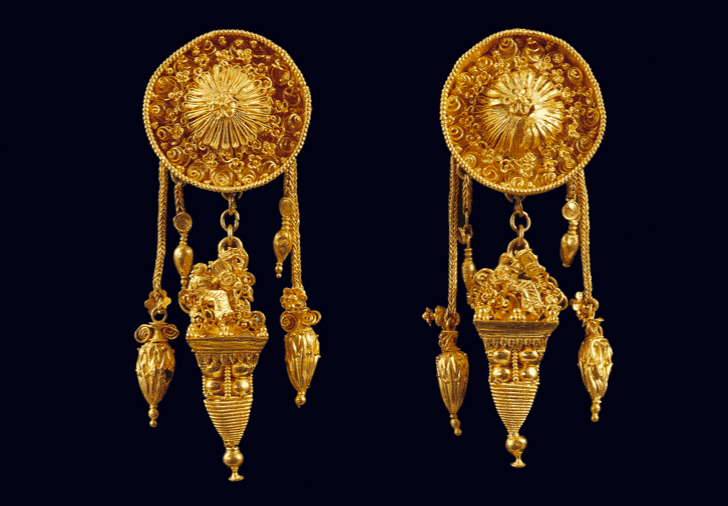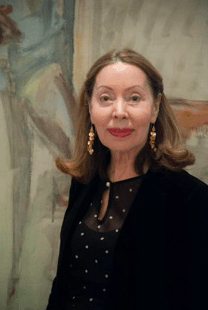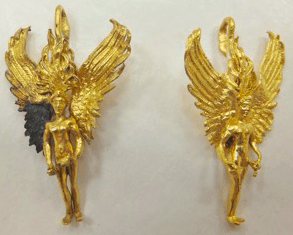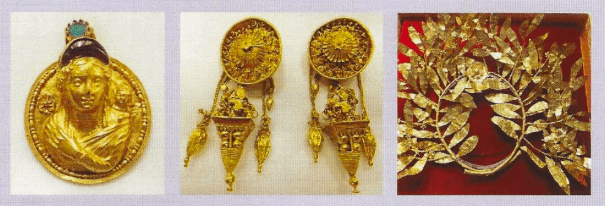
You would be hard pressed to find someone who has not marveled at the jewellery adorning the ancient Greeks. The Hellenistic period produced some of the most elaborate and intricate jewellery of the Greek world. Vibrant gold, ornate workmanship, and beautiful designs which see designers to this day drawing inspiration from ancient Greece, including using gold coins for necklaces and earrings, hoop earrings which were prevalent in the Hellenistic period, as well as wreath headbands.
Esteemed archaeologist Dr Monica Jackson is an expert on ancient Greek jewellery and a lecturer specialising in the Mediterranean, Aegean and Black Sea areas. She has participated in excavations in Greece, Cyprus and further east, with a particular area of research in Hellenistic gold jewellery. Dr Jackson has lectured extensively about this topic in Australia, the USA and England.
Her latest work is a book on the jewellery housed in the famous Benaki Museum in Athens. One of the most astounding private collections in existence, the Benaki Museum is a must-see for locals and tourists alike, from its art, sculptures, exhibitions, publications and gift shop. Showcasing each of these precious artefacts and detailing their significance, Hellenistic Gold Jewellery in the Benaki Museum Athens contains 130 beautiful photographs which accompany Dr Jackson’s analysis. The book was launched at Benaki in Athens last year and will now be unveiled in Sydney, this Thursday, 15th of February, at the University of Sydney.
GCT recently caught up with Dr Jackson to chat about her passion for archaeology, ancient jewels and her wonderful new book.
 What made you enter the field of archaeology?
What made you enter the field of archaeology?
At a young age growing up in a small country town I dreamt of becoming a famous artist – the dream was encouraged by several first prizes in the local shows. My interest in archaeology began in my second last year at Loreto College boarding school in Brisbane when I discovered the heroes of the ancient world such as Alexander the Great and Hannibal. My Ancient History teacher, Sister de Montfort took a particular interest in my progress. I was awarded the Ancient History prize and gained an ‘A’ grade in the matriculation exams.
What made you want to specialise in ancient jewellery?
During the years, I attended excavations at Torone Halkidiki, directed by the founder of the Australian Archaeological Institute at Athens, Professor Alexander Cambitoglou. We discovered fragmentary black-glazed pottery from the Hellenistic period known as West Slope Ware. The decoration around the necks of these vases was often gilded wreaths and necklaces. Since it was my job to inventory many of the fragments in the archive department, I became fascinated by these exquisite jewellery designs, which became the inspiration for my PhD thesis.
 What are the most exciting and challenging aspects of your work?
What are the most exciting and challenging aspects of your work?
Micro and miniature techniques of the ancient goldsmiths are the most exciting but also the most challenging. Traditionally archaeologists have tended to marginalize the so-called ‘Minor Arts’ and in particular miniature techniques. Today attitudes are changing, particularly as jewellery is now accepted and published as archaeological artefacts. The ability to examine gold jewellery under the optical microscope is the way forward.
What sets this collection apart from other ancient jewellery?
It is the personal and eclectic nature of the collection, assembled over time by Antonis Benakis. Antonis was shaped by the cosmopolitan world of the Alexandrian Greeks. He took the opportunity, wherever possible to establish the provenance and history of his collection through consultation and scholarship.
The collection incorporates a wide range of jewellery types, which give an insight into the nature and use of jewellery throughout the wider Hellenistic world, as far as the western reaches of Central Asia. The chapter ‘Seven Objects: Seven Stories’ exemplifies these interconnections.
 What is the most significant item you have ever come across?
What is the most significant item you have ever come across?
The most significant item is a pair of Eros earrings joined by a fine loop-in-loop chain (Inv. 1562). The dancing Eros holding aloft a cup kantharos has a hidden dimension, discovered under the optical microscope. The smiling face is in fact a comic theatre mask, which may be the goldsmith’s hidden signature.
What do you hope readers will gain from your book?
That every object has a story to tell. Each technically sophisticated piece provides an insight into the competitive world of the Hellenistic goldsmith-jeweller, who worked collaboratively – but demonstrated his individuality in surprising ways.

Book Launch: Dr Monica M. Jackson
'HELLENISTIC GOLD JEWELLERY IN THE BENAKI MUSEUM, ATHENS'
Date: Thursday 15 February 2018, 6.00 pm
Venue: MacLaurin Hall - Main Quadrangle,
The University of Sydney
Followed by light refreshments (free event)
Register via email: [email protected] or call the AAIA - (02) 9351 4759
The book will be available for purchase at the launch and following that at the Sydney University Nicholson Museum gift shop.


